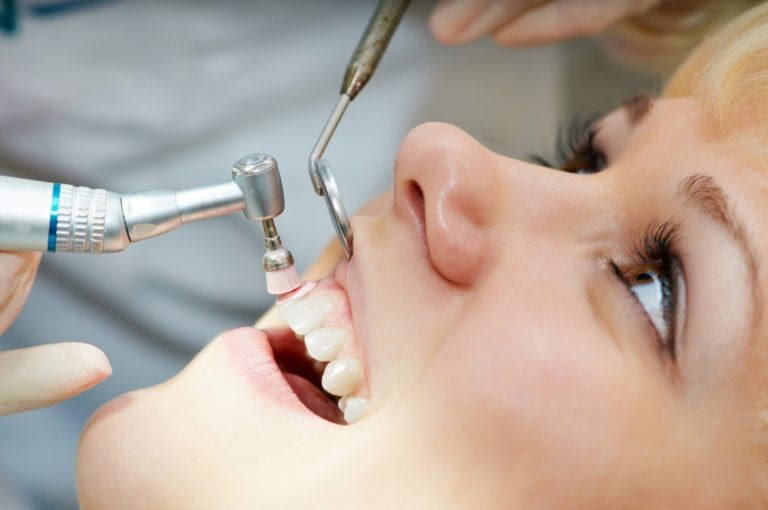General Dentistry and Cleanings

General dentistry encompasses a broad range of diseases and disorders of the oral and maxillofacial region. Everyone should see a general dentist for routine oral health examinations, twice-yearly cleanings, and treatment of routine oral health complications, such as minor tooth decay. General dentistry is as much about prevention as it is about treatment. Patients who visit a general dentist can expect professional oral health care, as well as education and advisement about self-care between office visits.

Did you know…that the American Dental Association recommends that every American visit a general dentist a minimum of one time every six months? Doing so can aid in the detection of decay, oral disease and other dental health problems before they progress and become severe. If you are at risk for certain complications or have a history or periodontal disease and advanced decay, you may need to visit your general dentist on a more frequent basis. Patients who visit their dentist regularly and as recommended are more likely to retain their natural teeth and enjoy a lifetime of good oral health.
Do I need to visit a general dentist? Frequently Asked Questions
Yes. Even if you are not currently experiencing any symptoms of tooth decay or gum disease, it is important to visit your dentist for a thorough examination and cleaning. Despite daily brushing and flossing, your teeth can still accumulate tartar that can harbor bacteria. These bacteria can lead to gum disease and tooth decay if not professionally removed at your dentist’s office.
What should I expect during my dentist visit?
Your cleaning and consultation will consist of a visible examination of the teeth and gums. Dental x-rays, or radiographs, may be taken to check for cavities between the teeth where the dentist cannot fully visualize with sight alone. Other types of x-rays may be taken to check for abscessed teeth, impacted teeth, TMJ problems, or other problems within the bone and jaws. The hygienist will check your gums with a special instrument called a periodontal probe. This measures the gum pocket that surrounds each tooth. The depth of the pocket indicates whether the gum is healthy or if gum disease is present. If your gums are healthy with no signs of gum disease present, the hygienist will clean your teeth using special instruments to remove hardened plaque (tartar or calculus) from your teeth, followed by polishing. The dentist will examine the teeth and radiographs and will discuss any findings and potential treatment needs. Depending on the amount of time necessary for your cleaning this may be done at your exam appointment or it may need to be rescheduled for a separate appointment time with the hygienist.
Scaling and Root planning
If the teeth and gums are found to be unhealthy, and have active gum disease, or periodontal disease, the hygienist and dentist will recommend a more advanced cleaning called scaling and root planning. This may also be referred to as a deep cleaning. If the pocket depths measured around your teeth are consistently over 3 mm, heavy tartar build up is detected below the gum lines on the roots of several teeth, bleeding gums is consistent throughout the mouth, or bone loss is visible on the radiographs, deep cleaning is needed.
You will most likely be rescheduled to have the deep cleaning done. This procedure requires additional time that may not be available in the schedule. Most insurance companies do not allow the deep cleaning to be completed in one visit. Most deep cleaning procedures are separated into two appointments. During the procedure, the gums may be given local anesthetic to help control pain. The hygienist uses special instruments to reach below the gums to effectively remove plaque, tartar build-up and diseased gum tissue. It is normal to experience some tenderness and discomfort following a deep cleaning. The dentist may prescribe pain killers to keep you comfortable following the treatment.
You will be rechecked for healing approximately six weeks following the scaling and root planing procedure. At that time, a light polishing may be done. Most patients who have undergone this procedure need to have regular cleanings every 3 to 4 months, instead of the traditional every 6 months, due to the complex nature of this condition.
Are there any special instructions I need to follow after seeing my dentist?
Based on the results of your dental check-up, your general dentist may recommend that you return for treatment or follow a special at-home oral care plan. You may also be referred to a dental specialist for treatment of advanced oral health conditions.

